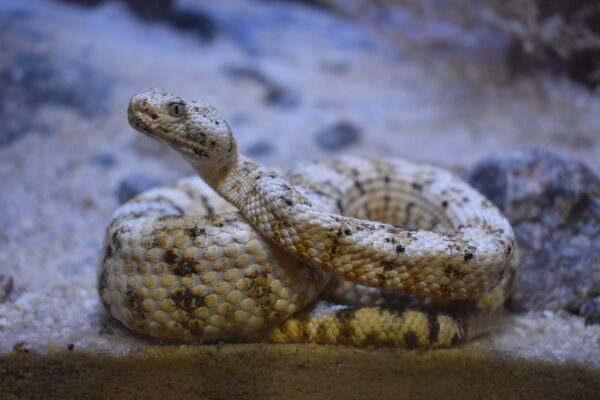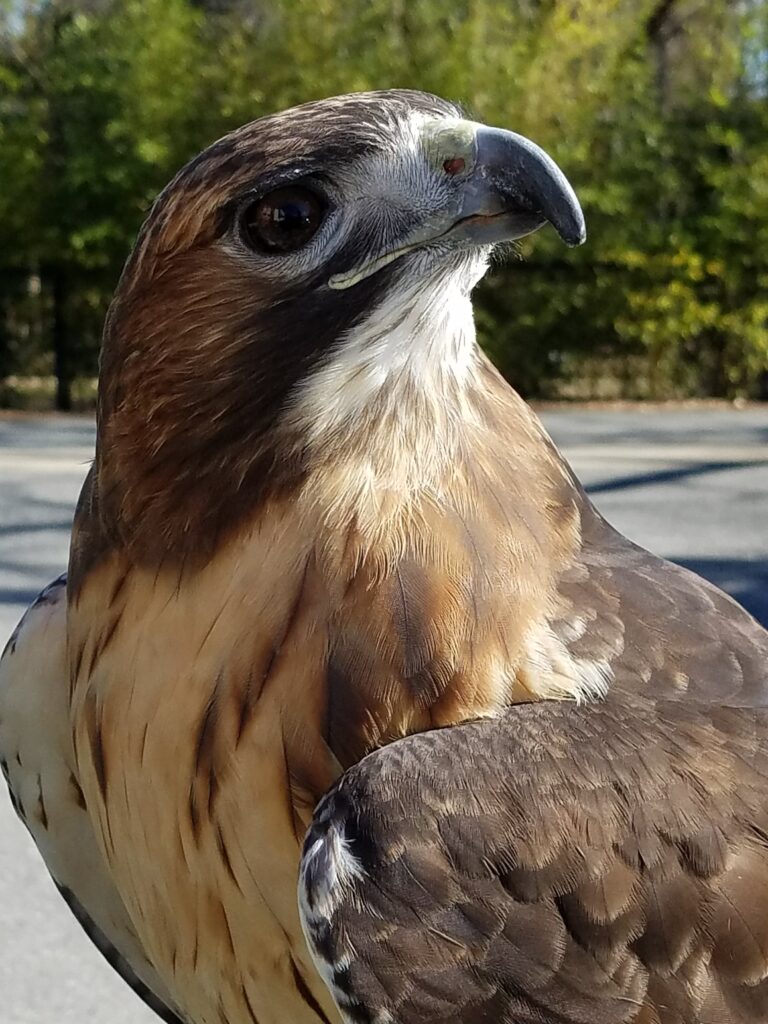On Dry Land
One-fifth of the Earth’s surface is covered in dry habitats that receive less than 10 inches of rain per year on average. Despite finding sparse amounts of water here, there is still plenty of life. These biomes are home to more than 1 billion people worldwide, thousands of species of plants and hundreds of animal species. This type of climate is a desert.
So, what makes a desert a desert? Deserts are often classified as barren land, which means that they lack vegetation and life. However, plants and animals are found living in this climate but have adaptations for life in a harsh environment. Deserts are vast in size and are found all over the world, on every continent including Antarctica! While most people assume all deserts are dry and hot, some of them are cold – very cold.

In hot deserts, depending on the location, temperatures during warmer months can reach up to 120° Fahrenheit and rainfall can range from less than one inch to 18 inches of rain per year. The most important adaptation in hot deserts is the ability to conserve water because of its lack of availability. Plants usually have a thick skin that protects stored water from evaporating. The most common types are succulents and cacti which also have spines to protect from most predators.
The animals that live in this climate also have many adaptations. Mammals, reptiles and invertebrates often burrow deep into the sand or hide under rocks to keep cool. Some species are nocturnal, which means they are most active at night and sleep during the hottest part of the day. Desert species, especially mammals, can have fatty humps on their bodies to store and conserve water. Birds typically have warmer body temperatures, which aids in dealing with excessive heat. They can dissipate any heat absorbed through the feathered portion of their bodies by releasing excess heat through their scaly legs by dilating their blood vessels.

Cold deserts, like the Arctic Tundra in Antarctica, are also considered deserts because they accumulate less than 10 inches of precipitation annually. Fun fact, the Arctic Tundra is actually the world’s largest desert! These tundras, or polar deserts, are characterized by permafrost, a layer of soil and partially decomposed organic matter that is frozen year-round. More than 1,700 plant species can be found scattered among polar deserts, including dwarf shrubs, herbs, grasses, mosses and the most common type of plant species, lichens. Lichens are a combination of fungi and algae that grow very slow on various surfaces and are resilient to harsh conditions and sub-zerotemperatures.
Cold desert animal species are far and few, with only a handful of flighted birds, penguins, seals and whales, along with one species of bear: the polar bear. These animals are equipped for below-freezing temperatures on land or in the ocean, so seals, whales and penguins often have thick, fat blubber for extra insulation, and polar bears have dense, water-resistant fur as well as a thick layer of body fat. Some species of polar animals will huddle together to keep warm, and penguins and seals are most notable for being extra close with their friends when temperatures are less than desirable. Polar desert animals spend most of their time hunting for food, mostly consisting of fish, although polar bears prefer seals for their fat content.
North American Deserts
In North America, there are four major hot deserts: the Great Basin, the Chihuahuan Desert, the Sonoran Desert and the Mojave Desert. These sandy deserts are located in the western part of the continent, stretching from Canada into U.S. states like Utah and Arizona, and down into Mexico. The Virginia Zoo has several species of hot desert animals that are native to North America.

Gila monsters are a unique lizard species primarily found in the southwestern United States and Mexico. Its name comes from the Gila River, where the lizards are commonly found. These lizards are diurnal, meaning they are active during the day, especially in early morning. The Gila monsters have low metabolic rates and their body structure aids in storing fat, making frequent food searching unnecessary and helps to conserve energy. They typically hide in the shade to keep their bodies cool and to avoid potential predators, such as coyotes. Gila monsters have a unique way to protect themselves, which involves a toxic bite. They bite their victim for up to 10 minutes and, while chewing on the wound, inject venom through grooved teeth in their lower jaws. There is no antivenin for Gila monster bites, and no human has ever died from the fairly mild neurotoxin, however side effects do include extreme pain at the wound.

Another North American hot desert species found at the Virginia Zoo is the Southwestern speckled rattlesnake. This species can be found in Northern Mexico, southern California, Nevada, Arizona and southwestern Utah. Southwestern speckled rattlesnakes prefer rocky areas and the open desert, and are adapted to camouflage perfectly into their surroundings. While they are primarily nocturnal, they can be occasionally found basking in the sun to absorb heat to control their body temperature, which is called being ectothermic. Like most snake species, these rattlesnakes only need to eat once a week or every two weeks, as they do not metabolize as fast as other types of animals. They also do not use a lot of energy, except when moving around or ambushing prey for food.

Kele is a Red-tailed hawk who lives at the Virginia Zoo in the Program Animal Building, where the Zoo’s ambassadors for educational programs live. Her species can be found in the wild in deserts throughout all of Canada into the United States and as far south as Mexico and Panama, although this species of hawk is very adaptable and can also live in mountains or tropical rain forests. The birds of prey perch high up on cacti and in trees and watch for their next potential meal, which is easy to do since the hawks have excellent vision and their prey live in vast, open areas with little to no coverage.
South American Deserts
There are five major hot deserts in South America: the La Guajira Desert, Sechura Desert, Patagonian Desert, Atacama Desert and Monte Desert. South American deserts cover more than 380,000 square miles, are some of the largest deserts in the world and have a wide variety of wildlife not found in other deserts. There is still little precipitation here, however, some deserts close to rivers and the Pacific Ocean have been known to flood yearly due to storm surges.

Not many animal species found at the Virginia Zoo are native to a South American desert, with the exception of theScreaming hairy armadillo, which lives in the Monte Desert. Olivia, Dora and Diego are the Zoo’s three Screaming hairy armadillos. The trio live in the Program Animal Building, and Olivia and Dora participate in education programs while Diego is currently unavailable for programs due to a condition called Megaesophagus.

The species got its name from the screeching alarm call they make when frightened to ward off predators. The word armadillo is a Spanish word meaning “little armored one” and it refers to the bony plates that cover their back, head, legs. They also have hair along their backs and bellies. Screaming hairy armadillos alter their periods of activity seasonally. They are primarily diurnal in winter months when desert heat is less of a threat and in warmer months they are primarily nocturnal creatures, burrowing in the sandy soil to cool off and sleep.
European and Asian Deserts
Not much of the land found in Europe is considered to be a desert. The Oltenian Sahara Desert is an unintentionally man-made desert in Romania that was caused by deforestation in the 1960s. The Highlands of Iceland desert, Tabernas Desert, and Accona Desert are also found in Europe, as well as the Deliblato Sande Desert. This European desert spans only 115 square miles but is home to 900 diverse plant species, some of which are not found in any other parts of the world. In Asia, there are five major deserts: the Thar Desert, Takla Makan Desert, Kyzylkum Desert, Karakum Desert and the Gobi Desert – a cold desert spanning more than 500,000 square miles.
Australian Deserts
In total there are 10 deserts across the entire continent of Australia, but only five are considered major deserts: the Great Victorian Desert, Great Sandy Desert, Gibson Desert, Tamari Desert and Simpson Desert. More than 20 percent of Australia is encompassed in deserts, however, the entire continent receives very little rain compared to other continents and is often declared a desert as a whole.
African Deserts
The continent of Africa is unique for its capability to be hospitable to various biomes, including hot deserts. Africa is home to three major deserts: the Namib Desert, Kalahari Desert and the largest hot desert in the world, the Sahara.

The Fennec fox is the smallest species of fox in the world and is only native to the Sahara Desert. These foxes have large ears relative to their body size, which help dissipate heat and aid in hearing prey (lizards, grasshoppers and small rodents) under the sand. Fennec foxes are also the lightest colored fox species, and their sandy colored fur aids in camouflage. Fennec foxes are also nocturnal, burrowing during the day to rest and shelter from the heat, then emerging during nighttime in search of food. The Virginia Zoo’s Fennec fox, Ghibli, can be found frequently napping in his exhibit in the Africa – Okavango Delta.
While Norfolk is not a desert, the Virginia Zoo has recreated several of these animals’ habitats to ensure they are thriving and healthy. It is important for the Zoo to maintain environments that are not only hospitable but stimulating for each animal. By establishing their native habitats, the animals have more natural behaviors, just as they would do in the wild. Join us in a few months as we swing deeper into another biome – the rainforests of the world!